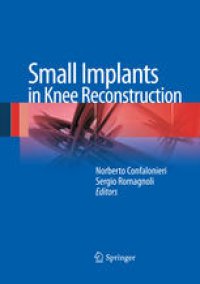
Ebook: Small Implants in Knee Reconstruction
- Tags: Orthopedics, Minimally Invasive Surgery, Surgical Orthopedics
- Year: 2013
- Publisher: Springer-Verlag Mailand
- Edition: 1
- Language: English
- pdf
Minimally invasive joint replacement has become one of the hottest topics in the orthopedic world. In the case of the knee, however, this concept has been widely misunderstood. All too frequently it is taken to mean keyhole surgery in which traditional components are implanted with a shorter surgical time. Such an approach in fact has few benefits and various possible dangers.
In this book, international experts discuss truly minimally invasive knee reconstruction techniques that involve tissue-sparing surgery and small implants and permit preservation of both the anterior and the posterior cruciate ligament. These techniques have the key advantage of respecting the physiological joint biomechanics. They also entail minimal removal of bone tissue from the tibia and only a small skin incision that avoids damage to the extensor apparatus. All of the most innovative techniques used in uni- and bicompartmental knee reconstruction are covered in detail, including computer-assisted procedures. Long-term results are reported, and pitfalls, highlighted. The reader will learn how, with careful selection of patients and rigorous surgical technique, compartmental reconstruction offers a valid alternative to total knee replacement.
Minimally invasive joint replacement has become one of the hottest topics in the orthopedic world. In the case of the knee, however, this concept has been widely misunderstood. All too frequently it is taken to mean keyhole surgery in which traditional components are implanted with a shorter surgical time. Such an approach in fact has few benefits and various possible dangers.
In this book, international experts discuss truly minimally invasive knee reconstruction techniques that involve tissue-sparing surgery and small implants and permit preservation of both the anterior and the posterior cruciate ligament. These techniques have the key advantage of respecting the physiological joint biomechanics. They also entail minimal removal of bone tissue from the tibia and only a small skin incision that avoids damage to the extensor apparatus. All of the most innovative techniques used in uni- and bicompartmental knee reconstruction are covered in detail, including computer-assisted procedures. Long-term results are reported, and pitfalls, highlighted. The reader will learn how, with careful selection of patients and rigorous surgical technique, compartmental reconstruction offers a valid alternative to total knee replacement.